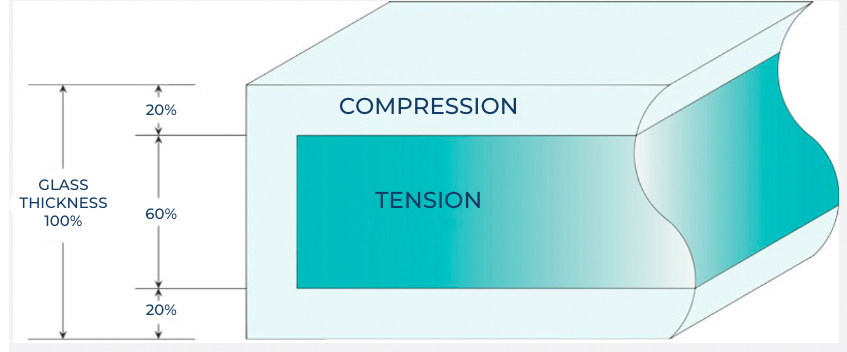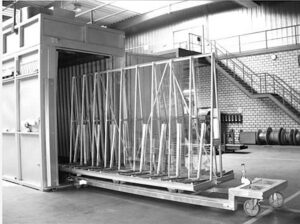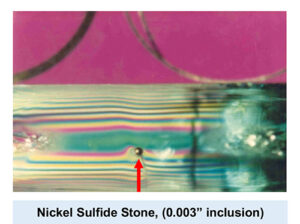Since 1972, Rochester Insulated glass has been providing heat-treated glass throughout the world.
Both of our furnaces allow RIG to increase capacity in production and continually provide some of the largest glass in North America.
Once the glass heated to the required temperature, it is then quickly cooled on both sides, simultaneously. The quick cooling process creates a state of high compression at the glass surface while the core of the glass is in compensating tension.

• Annealed is the purest form of float glass.
• Used if you are seeking limited roller wave distortion. Ie. Air traffic towers.
• If broken, annealed glass separates into large shards like a broken mirror.
• Not considered safety glass.

• Fully tempered glass is 4X stronger than annealed.
• Heat strengthened glass is 2X’s stronger than annealed.
• The small, roughly cubical pieces created in breakage qualify tempered glass as a safety glazing material.
• Fully tempered glass is considered safety glass.

Fully Tempered glass complies with safety glazing requirements as outlined by American National Standards Institute (ANSI) Z97.1 and the federal safety standard Consumer Products Safety Commission (CPSC) 16 CFR 1201.
There are instances, after installation, of tempered glass breaking due to no apparent cause. In relatively rare instances, breakage has been traced to the presence of nickel sulphide stones in the center tension zone of the tempered glass.


To prevent nickel sulphide inclusions, RIG utilizes a Jumbo European heat-soaking furnace to achieve a “break now, not later” result, based on the assumption that any glass lites with nickel sulphide inclusions will break during the heat soak process.
Nickel sulphide stones can manifest in the production of float glass. Therefore, they can be present in annealed, heat strengthened and tempered glass. During the heat strengthening or heat tempering process, the stone size can increase 2-4% causing stress on the glass and increasing probability of future breakage. A typical heat soak process elevates the glass temperature to 550 degrees F (290oC) for two hours. [BS EN 14179-1 standard]. If there are nickel sulphide stones present, theoretically the glass should break in the heat-soaking furnace and not during installation or use.
• RIG’s heat treated glass meets European standard EN 14179-1 (E): 09/2005 respectively EN 14179-1: 12/2016 and is designed and manufactured according to the valid European standards (CE).
• We recommend all exterior, fully tempered, coated or uncoated glass to be heat soaked.
While there is general agreement on the concept and intent of the heat soaking process, there is not agreement that heat soaking will guarantee 100% elimination of potential spontaneous breakage due to inclusions.